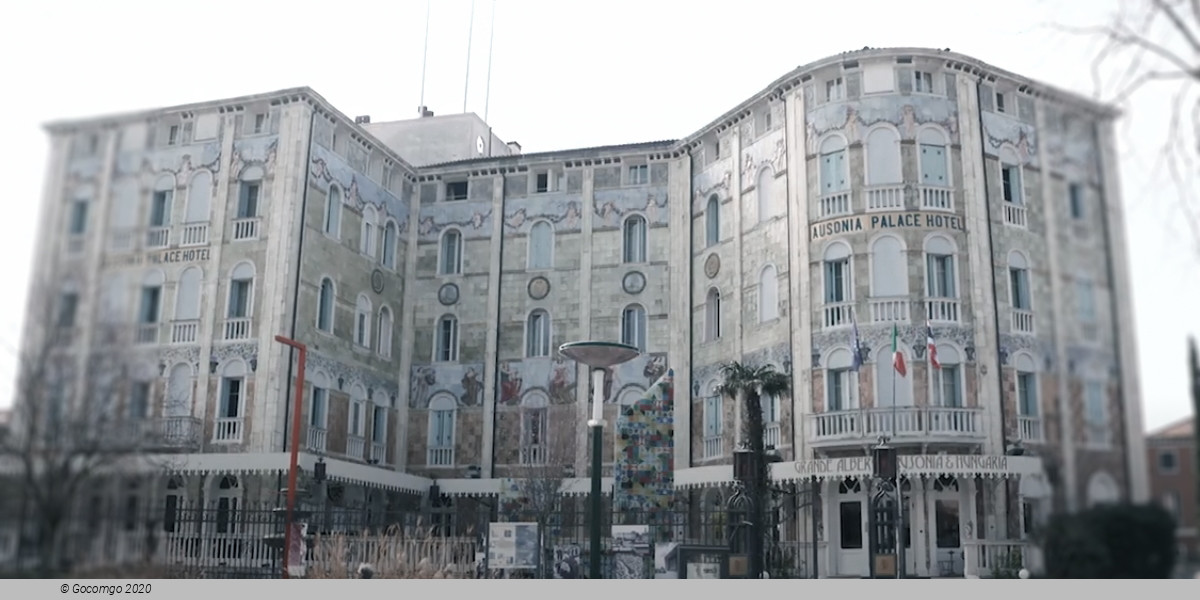Lido di Venezia

The Lido, or Venice Lido, is an 11-kilometre-long (7-mile) barrier island in the Venetian Lagoon, northern Italy; it is home to about 20,400 residents. The Venice Film Festival takes place at the Lido late August/early September.
Lido di Venezia is home to the Venice International Film Festival (Italian: Mostra Internazionale d'Arte Cinematografica della Biennale di Venezia, "International Exhibition of Cinematographic Art of the Venice Biennale"). It is the world's oldest film festival and one of the three most prestigious ones, together with the Cannes Film Festival and Berlin International Film Festival. These are sometimes called the "Big Three".
The film festival started in 1932. It was the idea of the then chair of the Venice Biennale who was worried about a decline in tourism at Lido due to the Wall Street Crash of 1929 and understood that cinema could help to alleviate this. It was successful. The prince Umberto di Savoia, the wife of the Prince of Wales, Winston Churchill, Henry Ford and film stars such as Greta Garbo and Clark Gable attended. Forty films form six countries were shown on the terrace of the Excelsior hotel. No awards were given, but an audience referendum chose which films and performances were the most praiseworthy.
The second festival was held in 1934. It was meant to be a biennial event but it became annual because of the success of the first one. There were some 20 awards, but there was no jury. Premiers were shown, which increased the prestige of the festival. So did a scandal caused by a Gustav Machaty's Ecstasy which showed the first scenes with a female nude in cinema history, which also launched the career of the actress Hedy Lammarr. This time the films were shown in the garden of the Excelsior hotel. In 1937 the venue of the festival was opened. It is the Palazzo del Cinema.
In 1939 the fascist government imposed the assignation of the awards to two propaganda films, a fascist one and a Nazi one. Because of this the Americans boycotted the 1940 festival. The 1940-41-42 editions are not listed as part of the festival because the government assumed total control of the screening of films and chose films from the “Rome-Berlin” axis. These festival were screened at two cinemas in Venice because the film hall was requisitioned. In 1943-45 the festival was suspended because of the war. It resumed in 1946. However, the French wanted their new festival, the Cannes Film Festival, to start at the same time as he Venice one. After negotiations it was decided that Cannes would run in the spring and Venice would start later, in late August. In 1946 and 1947 the festival was held in Venice because the film hall was requisitioned, this time by the American army. In the latter year the screenings took place at the Doge’s Palace. The festival returned o Lido in 1948. An arena for outdoors screenings was built outside the film hall. In 1949 the festival’s award, which was called International Great Prize of Venice, was renamed St. Mark’s Lion Prize. Later it was called the Golden Lion.
The Lido has also hosted numerous film-shoots. In 1971 the film Death in Venice (Morte a Venezia) directed by Luchino Visconti, starring Dirk Bogarde and Björn Andrésen, and based on the Death in Venice novel published in 1912 by Thomas Mann was screened. Both the novel and the film were set at lido and the Grand Hotel des Bains, where Thomas Mann stayed with his wife and brother in the summer of 1911. The novel was also turned into the Death in Venice opera by Benjamin Britten (his last opera) in 1973 and a ballet by John Neumeier in 2003.

